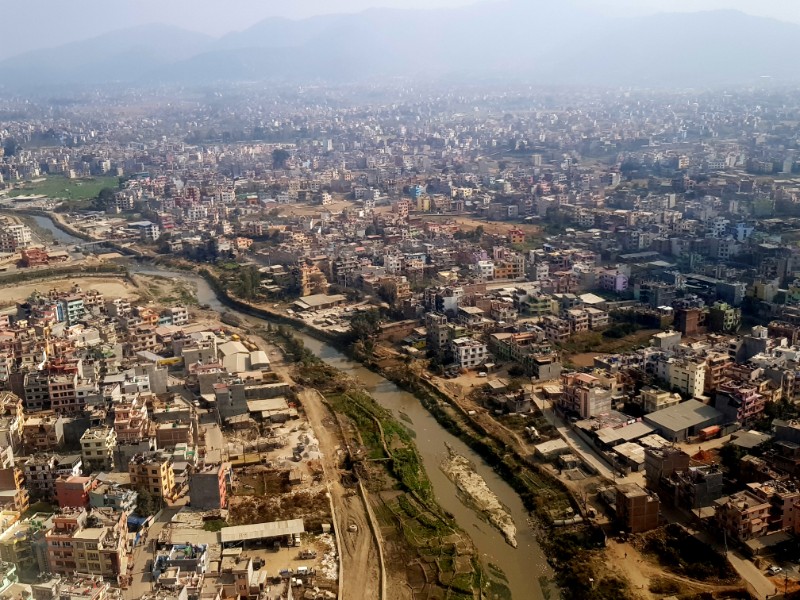Opinion: No Vision for Kathmandu
The last time any comprehensive planning was carried out in the Kathmandu Valley resulted in the ‘Physical Development Plan’ that was published in 1969. Based on this, the ‘Town Development Implementation Act’ was adopted in 1972, the Kathmandu Valley Town Development Committee (KVTDC) was formed in 1976, which then led to the preparation of the ‘Kathmandu Valley Town Development Plan’ (KVTDP).
‘The Preservation of Physical Environment and Cultural Heritage: Protective Inventory’ was published in 1975 followed by the ‘Master Plan for the Conservation of the Cultural Heritage in the Kathmandu Valley’ in 1977, both complementing the initial physical development plan. This then led to the World Heritage inscription of seven monument zones within the Kathmandu Valley in 1979. Flipping through these wonderful documents, one perceives a Kathmandu of the past, a valley still pristine and idyllic.
During the past months, with the lockdown in place due to the Covid-19 pandemic, restricted traffic and improved air quality, it was an ideal time to bicycle around the Kathmandu Valley. With little activity and noise on the streets, it has felt like moving through a trashed party venue after the guests had left. Every river and stream has been encroached upon, first with buildings and then with corridor roads squeezing the water systems into becoming open drains and sewers. The fertile land, once the riches of the citizens of the Kathmandu Valley, have been parcelled off and covered with ugly suburban sprawl. The remaining green spaces are occupied by footpaths and plinth walls, to be fenced off and labelled as urban parks.
The comprehensive plans that were prepared for the Kathmandu Valley during the late 1960s and through the 1970s were done so under the supervision of international experts, albeit together with national counterparts. Even the ‘Structural Plan of Kathmandu Valley’, prepared in 1987 and shelved due to political changes was assisted by UNDP and the World Bank. Would these plans have presented a vision for the Kathmandu Valley agreeable to the local communities? Would it have been possible to implement these plans? When did we lose sight of the vision? Where did it go wrong?
We can possibly find some of the decisions that contradicted the proposed vision already in the early days of implementation. The concept of containment of settlements, to stop urban sprawl, was initially the core planning concept. The Ring Road that was built in the mid-1970s became a catalyst for urban sprawl. The concept of comprehensive conservation of natural and cultural features of the Kathmandu Valley was reinterpreted for the World Heritage nomination into seven relatively limited monument zones. Beyond the hesitance to implement any comprehensive planning, the failure was possibly due the lack of appropriate planning tools and tough legislation.
The situation within the Kathmandu Valley got unmanageable particularly due to the accelerated migration from various parts of the country caused by deteriorated security and natural devastation. This was the case during the period between 1996 and 2006 defined by the “People’s War”, followed by the devastation of the 2015 Gorkha Earthquake. The regular displacement of communities due to floods and landslides during the monsoon rains is a further cause for migration. Those with the means bought cheap land on the periphery of the Valley, while others squatted in open spaces particularly along the undefined banks of the rivers.
In the meantime desperate measures of Guided Land Development (GLD), followed by Land Pool projects were implemented, with no consideration for character or quality. The newest trend is to market urban sprawl in the guise of “Smart Cities”. Instead of ensuring decentralisation, as is enshrined in the 2015 Constitution of Nepal, politically motivated urban constituencies, or vote banks, are being created within the Valley. Where is our vision for Kathmandu?
kai.weise@yahoo.com






